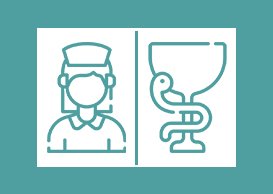Strategic Plan Overview
DAU’s first strategic plan (2017-2022) aimed to improve academic standards, expand community outreach, and develop institutional priorities. Our achievement of full institutional accreditation and academic accreditation of most of our programs by the Education and Training Evaluation Commission (ETEC-NCAAA) demonstrates our success in meeting these strategic goals and readiness to undertake more ambitious strategic planning to improve performance at all levels of DAU.
Therefore, our Second Strategic Plan (2023-2027) strives to build on the success of our first strategic plan by further improving academic and administrative processes, procedures, and activities. Our strategy planning is guided by a set of pillars, including the Kingdom’s vision 2030, academic accreditation attainment and quality assurance, and meeting labour market requirements.
The development of this strategic plan was conducted through an elaborate strategic review process that involved an array of DAU’s stakeholders, including faculty, staff, academic leaders, students, alumni, and all major external stakeholders to ensure proper participation in this important future shaping project.
DAU’s second strategic plan (2023-2027) was developed using a variety of strategic analysis tools. The SWOT analysis identifies and analyses internal strengths and weaknesses as well as external opportunities and threats. To identify strengths and weaknesses, we conducted many brainstorming sessions and focus groups with internal and external stakeholders. To identify opportunities and threats, we rely on Porter’s Five Forces framework, which identifies and analyses the five competitive forces shaping the private higher education industry in Riyadh, and on the PESTEL framework for analysing macro-environmental factors affecting the industry holistically. The SWOT analysis, however, provides no guidance, prioritizes issues, or suggests strategic alternatives because it only provides a snapshot of a firm at a particular moment in time. Taking a SWOT analysis, a step further, we created the TOWS Matrix, which, unlike SWOT, offers an advanced analysis that generates possible strategic alternatives by matching internal strengths and weaknesses with external opportunities and threats.
The strategic planning methodology adopted is the Balanced Scorecard framework (BSC), a strategic planning and performance management framework, allowing an organization to track financial and non-financial metrics and aligning its vision, mission, and values with all activities. The BSC approach organizes goals and objectives into four perspectives: financial, stakeholders, internal processes, and learning and growth.
To view and download DAU’s Second Strategic Plan (2023-2027) click here

 College of Medicine
College of Medicine College of Dentistry
College of Dentistry College of Architectural Eng & Digital Design
College of Architectural Eng & Digital Design College of Business Administration
College of Business Administration College of Law
College of Law University Preparatory Program
University Preparatory Program Respiratory Therapy – Nursing
Respiratory Therapy – Nursing Student Affairs Department
Student Affairs Department General Directorate of Planning, Development, and Quality Assurance
General Directorate of Planning, Development, and Quality Assurance Central Library
Central Library